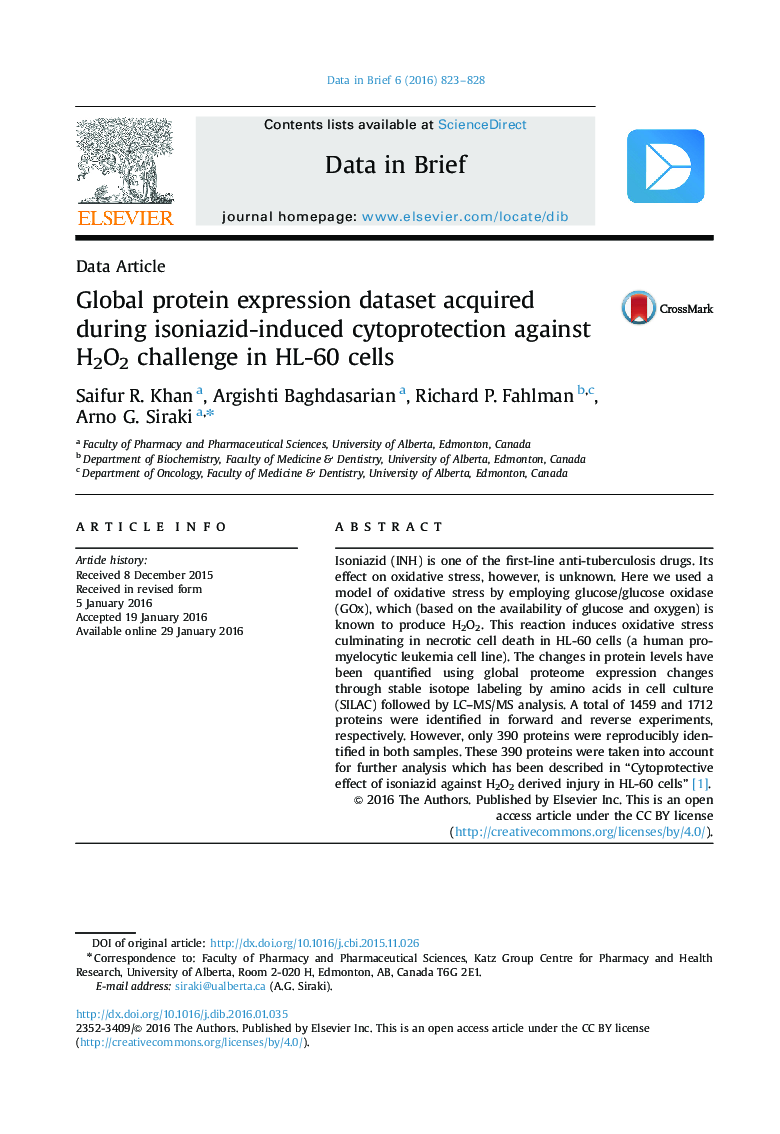| Article ID | Journal | Published Year | Pages | File Type |
|---|---|---|---|---|
| 175023 | Data in Brief | 2016 | 6 Pages |
Isoniazid (INH) is one of the first-line anti-tuberculosis drugs. Its effect on oxidative stress, however, is unknown. Here we used a model of oxidative stress by employing glucose/glucose oxidase (GOx), which (based on the availability of glucose and oxygen) is known to produce H2O2. This reaction induces oxidative stress culminating in necrotic cell death in HL-60 cells (a human promyelocytic leukemia cell line). The changes in protein levels have been quantified using global proteome expression changes through stable isotope labeling by amino acids in cell culture (SILAC) followed by LC–MS/MS analysis. A total of 1459 and 1712 proteins were identified in forward and reverse experiments, respectively. However, only 390 proteins were reproducibly identified in both samples. These 390 proteins were taken into account for further analysis which has been described in “Cytoprotective effect of isoniazid against H2O2 derived injury in HL-60 cells” [1].
